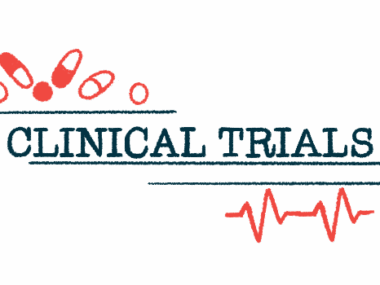FDA clears Phase 2 trial of antibody therapy ruxoprubart in AAV
Treatment to be given as add-on to standard therapy
Written by |

The U.S. Food and Drug Administration (FDA) has given NovelMed the green light to initiate a Phase 2 clinical trial to test its investigational antibody-based therapy ruxoprubart in adults with ANCA-associated vasculitis (AAV).
The Phase 2 study (NCT06226662) will evaluate the therapy’s safety and efficacy in up to 12 adults with microscopic polyangiitis (MPA) or granulomatosis with polyangiitis (GPA) — the two most common types of AAV — or kidney-limited AAV. Enrollment is expected to open soon.
“We are thrilled to have gained FDA approval to address AAV in patients with an inadequate response to standard of care,” Rekha Bansal, PhD, NovelMed’s CEO, said in a company press release.
Ruxoprubart will be given in addition to standard immunosuppressive therapy — similar to the design of the clinical trial that led to the approval of Tavneos (avacopan) as an add-on for adults with severe and active GPA or MPA.
“Ruxoprubart is positioned to compete with Tavneos with its potential for a superior safety and efficacy profile,” NovelMed said. Bansal said the study aims to “compare Ruxoprubart with historical data on Tavneos, hoping to improve AAV patients’ lives substantially.”
Current therapy carries risks
AAV is an autoimmune disease in which self-targeting antibodies, called ANCAs, ultimately promote inflammation and damage to small blood vessels. The most common manifestation of AAV is vascular damage in the kidneys and lungs.
ANCAs’ damaging effects are partly driven by excessive activation of the complement cascade, particularly its alternative pathway. The complement cascade, a part of the immune system, comprises a large group of proteins that, when activated, help the immune system clear harmful microbes.
Current AAV standard of care requires high doses of glucocorticoids, along with prolonged use of other immunosuppressive drugs, such as cyclophosphamide and rituximab. This approach comes with severe side effects, including risk of serious infections.
Tavneos, an oral therapy approved for use as an add-on to standard treatment in adults with severe and active GPA or MPA, works to block two complement pathways: the classical and the alternative.
The therapy effectively helps patients achieve disease remission and has glucocorticoids-reducing effects. But by suppressing two of the three complement pathways, the therapy can affect the body’s ability to fight harmful microbes and increase the risk of infections.
Ruxoprubart, formerly named NM807, is designed to selectively target only the alternative complement pathway. Therefore, it’s expected to help induce disease remission while not interfering with certain immune functions, so patients avoid the risk of serious infections associated with current treatments.
Data from a Phase 1 clinical trial (NCT05642546) that tested ruxoprubart in 40 healthy volunteers showed the treatment was safe and well tolerated, and it completely blocked the alternative pathway in a dose-dependent manner.
Participants in the upcoming Phase 2 study must have newly diagnosed or relapsed AAV and require treatment with cyclophosphamide or rituximab. They will be randomly assigned to receive an intravenous, or into-the-vein, infusion of either ruxoprubart (20 mg/kg) or placebo, every two weeks for seven doses over nearly three months, alongside standard of care.
The trial’s main goal is to measure the proportion of participants with a 50% reduction in Birmingham Vasculitis Activity Scores (BVAS), an assessment of AAV activity in which higher scores reflect more active disease.
Secondary goals include the proportion of patients achieving disease remission, as indicated by a BVAS score of zero, or those requiring rescue glucocorticoid treatment. The percent change in BVAS over time will also be assessed, as will changes in the blood levels of an inflammation marker called C-reactive protein and in quality of life.
NovelMed plans to compare outcome data from the trial with historical data from trials investigating Tavneos, as “ruxoprubart is expected to be a next-generation product that can replace Tavneos,” the company said.
“The FDA’s clearance of the Phase II clinical trial for AAV marks a significant milestone for Ruxoprubart, which harbors potential as a versatile platform for multiple indications,” said Joseph Jankowski, PhD, NovelMed’s vice president of business development.
The company is also testing ruxoprubart in other complement-driven diseases, including paroxysmal nocturnal hemoglobinuria (PNH) and atypical hemolytic uremic syndrome. Data from a proof-of-concept Phase 2 trial in PNH patients showed promising safety and efficacy profiles.






